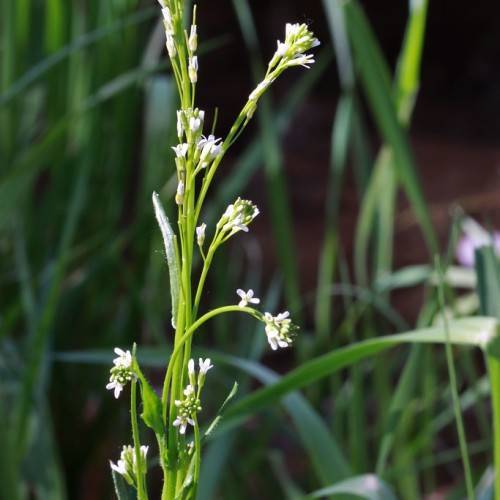
Cream-Flowered Rockcress
Arabis pycnocarpa
Watering:
Average
Hardiness Zone:
Flowers:
Flowers
Sun:
Sun
Fruits:
Fruits Ready In Fall
Leaf:
Yes
Growth Rate:
Low
Drought Tolerant:
Yes
Salt Tolerant:
Yes
watering
Western Hairy Rockcress needs regular watering in order to stay healthy and vigorous. New plants should be watered every few days until established when they should be watered with a deep soak, every 4-7 days, depending on weather conditions and soil type. During hot weather, it may need more frequent watering. As a general rule, if the soil is allowed to dry out completely between waterings, the plant will thrive.
sunlight
Western Hairy Rockcress (Arabis hirsuta var. hirsuta) typically prefers moderate sunlight that is neither too direct nor too indirect. For optimal health, the plant should receive full sun in the morning and light shade in the afternoon. Western Hairy Rockcress is best suited for planting in an area that receives at least 4 to 6 hours of sunshine each day. It is also important that it not be planted in an area where it is in deep shade for more than several hours of the day.
pruning
Pruning Western Hairy Rockcress should be done in winter when the plant is dormant. For optimal plant health, it is recommended to prune the plant back by up to a third of its height. When pruning, it is important to make sure all budding stems, leaves, and flowers are completely removed back to the base of the plant. This will ensure that the growth of the plant remains robust in the spring and summer months.
